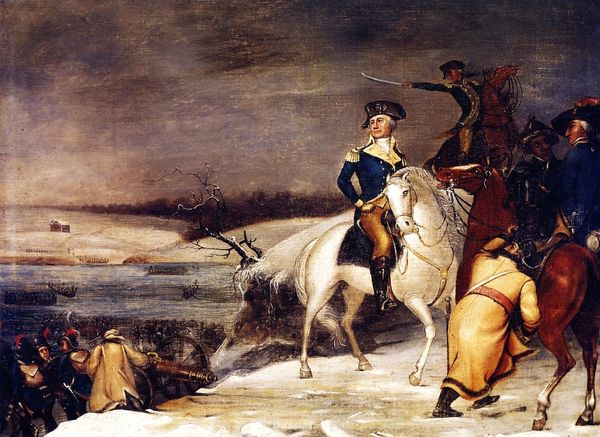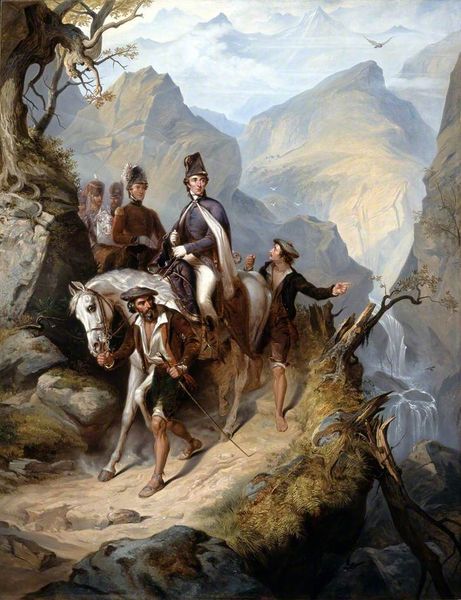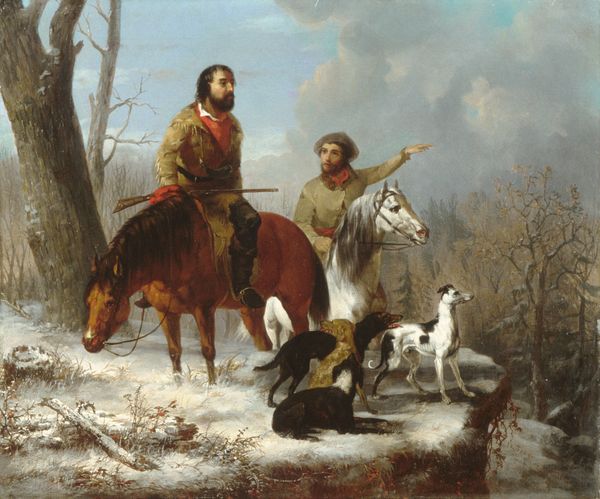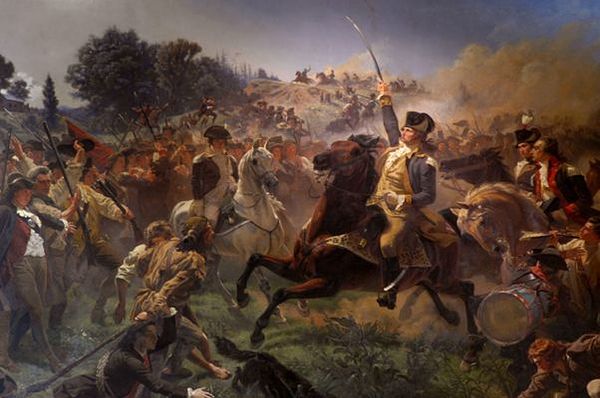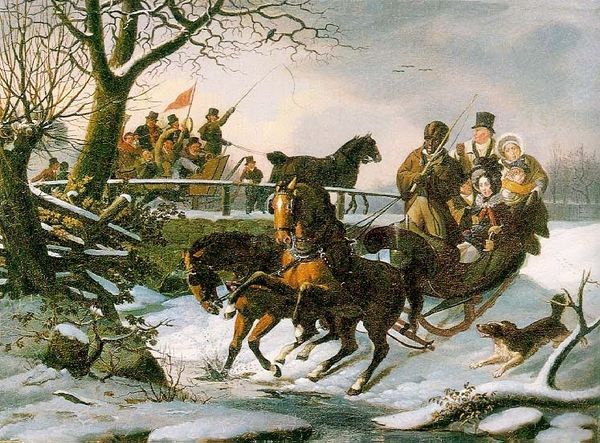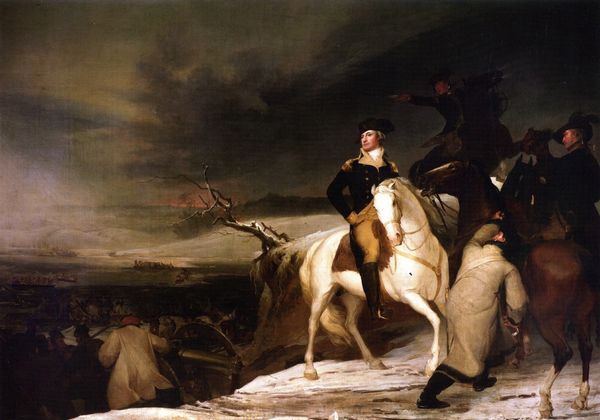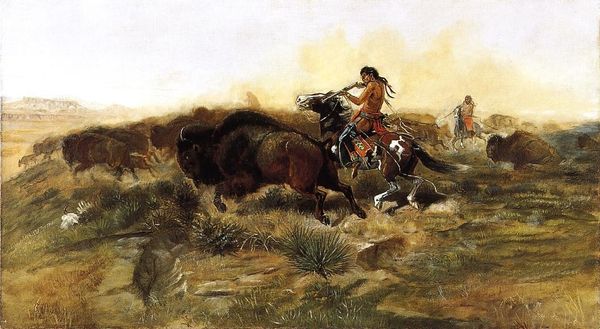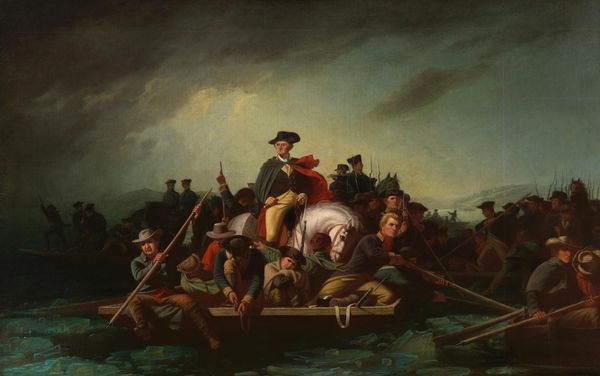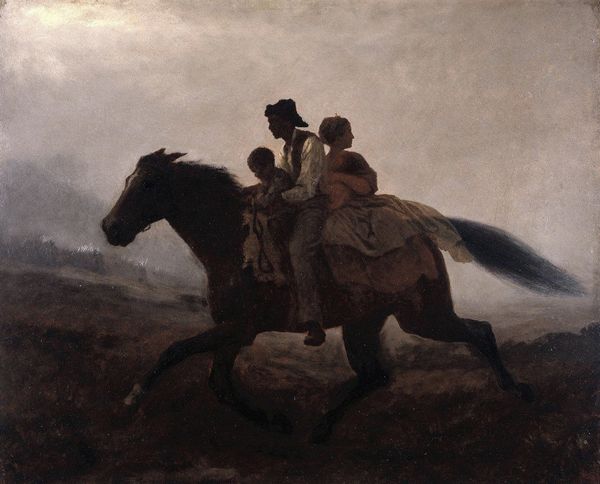
painting, oil-paint
#
portrait
#
figurative
#
character portrait
#
narrative-art
#
painting
#
oil-paint
#
landscape
#
figuration
#
romanticism
#
history-painting
Copyright: Public Domain: Artvee
Editor: Here we have Paul Delaroche’s “Napoleon Crossing the Alps,” created in 1850 with oil paint. The scene is striking—the vast, cold landscape juxtaposed with the figure of Napoleon himself. How do you approach understanding this artwork from a formal perspective? Curator: Delaroche orchestrates a fascinating dialogue between the figure and ground. Notice the artist's meticulous application of paint. The cold blues and whites of the snow sharply contrast Napoleon's warmer-toned coat, drawing our eyes to his figure, creating an immediate focal point. Do you see how the composition subtly guides the eye? Editor: I see that. The way the light hits Napoleon definitely makes him stand out from the background. The jagged rocks also draw me up toward him, like diagonal lines that create depth, too. Is Delaroche using color and shape here to convey something deeper about Napoleon himself? Curator: Precisely! The somewhat unflattering depiction of Napoleon as bundled and rather vulnerable subverts the heroic trope prevalent in earlier depictions, doesn't it? We can further explore the structural relationship between the detailed rendering of the figures and the looser brushwork in the background, what do you make of that? Editor: I think the stark difference adds drama. But in that earlier heroic style, would details of the horse or of Napoleon’s coat be added to enhance status and nobility? Curator: In previous Napoleon portraits by artists such as David, indeed. However, Delaroche focuses on rendering textures meticulously—the fur, the snow, the fabric—which emphasizes materiality. Perhaps undermining ideals of heroism in favour of realism. It shifts the focus away from idealised representation. Editor: Interesting, this look at structure and form really shows how even in an image celebrating Napoleon, Delaroche communicates complexity and reality over legend. Curator: Yes. Analyzing purely from the visual elements of line, texture, color, composition, and materiality has unlocked many possibilities in seeing new elements.
Comments
No comments
Be the first to comment and join the conversation on the ultimate creative platform.
